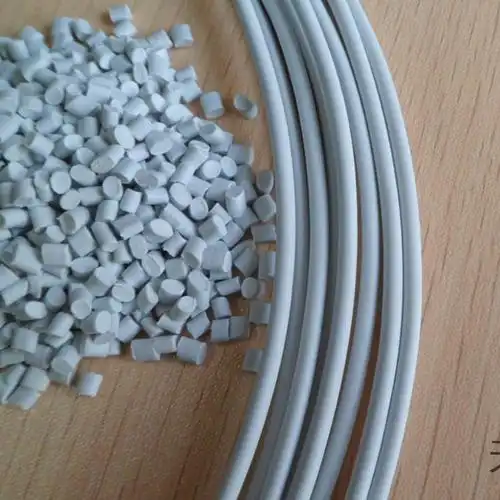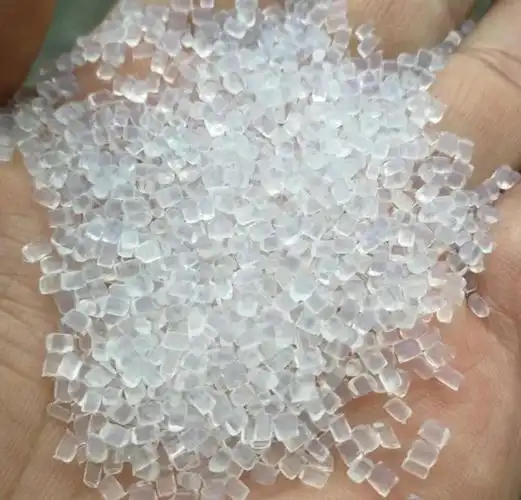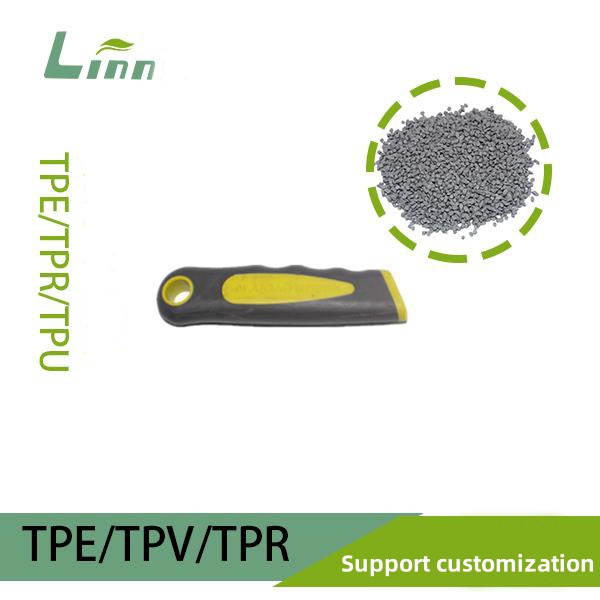Having worked in the plastics industry for over a decade, I’ve fielded countless questions about material combinations, each with its own quirks and possibilities. One question that keeps popping up is whether thermoplastic elastomers (TPE) and thermoplastic polyurethanes (TPU) can be mixed for practical use. It’s a topic that sparks curiosity among manufacturers, product designers, and engineers aiming to craft materials with tailored properties or cut costs without sacrificing performance. In this article, I’ll share my insights, grounded in years of hands-on experience, to explore whether blending TPE and TPU is feasible, what challenges you might face, and how to make it work. Let’s dive in with a clear-eyed look at the process and its real-world implications.

What Are TPE and TPU?
To understand if these materials can play nicely together, we need to start with what makes them tick.
TPE: Thermoplastic elastomers are a broad family of flexible, rubber-like materials that can be melted and reshaped like thermoplastics. They include subtypes like styrenic block copolymers (SBCs, such as SEBS), thermoplastic olefins (TPOs), and copolyesters. TPEs are loved for their versatility, used in everything from shoe soles to medical tubing, thanks to their softness, elasticity, and ease of processing.
TPU: Thermoplastic polyurethane is a specific type of TPE with a unique chemical structure based on urethane linkages. TPUs stand out for their excellent abrasion resistance, toughness, and flexibility across a wide temperature range. You’ll find them in phone cases, conveyor belts, and high-performance coatings.
While both TPE and TPU fall under the thermoplastic elastomer umbrella, their chemical compositions differ significantly. TPEs (like SEBS) often have a polyolefin or styrene base, while TPUs rely on polyurethane chemistry. This distinction is critical when considering whether they can be blended effectively.
Why Blend TPE and TPU?
Before we get into the nuts and bolts, let’s consider why someone might want to blend these materials. In my years working with compounders and manufacturers, I’ve seen blending used to:
Balance properties: Combine TPU’s toughness with TPE’s softness for a custom feel.
Reduce costs: TPEs like SEBS are often cheaper than TPUs, so blending can lower material expenses.
Enhance processing: TPEs may improve flow characteristics in TPU-heavy compounds.
Meet specific requirements: Create materials with unique attributes for applications like wearables or automotive parts.
But wanting to blend is one thing—making it work is another. Let’s explore the feasibility and challenges.
Is Blending TPE and TPU Possible?
The short answer is: yes, TPE and TPU can be blended, but it’s not a plug-and-play process. Success depends on understanding the materials, equipment, and end-use goals. Here’s a breakdown of the key factors.
1. Chemical Compatibility
Blending polymers is like mixing oil and water—without the right conditions, they won’t integrate. TPE and TPU compatibility hinges on their chemical makeup:
Similarities: Both are thermoplastic elastomers, so they share some processing traits, like meltability. Certain TPEs, like copolyester-based ones, may have better compatibility with TPUs due to polar similarities.

Differences: Most TPEs (e.g., SEBS or TPO) are non-polar, while TPUs are polar due to their urethane groups. This mismatch can lead to phase separation, where the materials form distinct layers rather than a uniform blend, resulting in weak mechanical properties.
In my experience, blending a non-polar SEBS-based TPE with a TPU often requires a compatibilizer, like a maleic anhydride-grafted polymer, to bridge the gap between phases. Without it, you might end up with a material that looks blended but performs poorly.
2. Processing Challenges
Blending TPE and TPU involves melting and mixing them, typically through extrusion or compounding, to create uniform pellets or parts. Processing conditions are critical:
Temperature: TPUs typically process at 190–230°C, while TPEs like SEBS may require 160–200°C. Too high a temperature can degrade the TPE, while too low can leave TPU unmelted.
Shear: TPEs and TPUs respond differently to shear forces in an extruder. High shear can break down TPU’s molecular chains, reducing its toughness, while low shear may not mix the blend thoroughly.
Equipment: A twin-screw extruder with high mixing capability is ideal for achieving a homogeneous blend. Single-screw extruders often fall short for complex blends like this.
I recall a project where we tried blending a TPU with an SEBS-based TPE for a flexible hose. Early trials resulted in uneven pellets until we adjusted the extruder’s screw design and added a compatibilizer. It was a reminder that processing is as much an art as a science.
3. Performance Trade-Offs
Blending TPE and TPU can create a material with a unique mix of properties, but it’s a balancing act. Potential benefits include:
Improved flexibility: TPEs like SEBS can soften a harder TPU, creating a more comfortable feel for applications like wearable straps.
Cost savings: TPEs are often less expensive, so blending can reduce costs while retaining some of TPU’s strengths.
Custom properties: Fine-tune hardness, elasticity, or abrasion resistance for specific needs.
However, drawbacks can include:
Reduced toughness: Adding TPE to TPU may dilute TPU’s superior abrasion resistance or tensile strength.
Limited heat resistance: TPEs like SEBS may lower the blend’s ability to withstand high temperatures compared to pure TPU.
Inconsistent quality: Poor blending can lead to variable performance across batches.

Practical Challenges and Solutions
Blending TPE and TPU isn’t a walk in the park. Here’s a table summarizing common challenges, their causes, solutions, and key considerations, drawn from my years of troubleshooting.
|
Challenge |
Cause |
Solution |
Key Considerations |
|---|---|---|---|
|
Phase Separation |
Chemical incompatibility between non-polar TPE and polar TPU. |
Use a compatibilizer (e.g., maleic anhydride-grafted SEBS). |
Test blend homogeneity with microscopy or DSC. |
|
Material Degradation |
Excessive heat or shear during processing. |
Optimize temperature (180–210°C) and screw speed; add stabilizers. |
Monitor melt flow index to detect degradation. |
|
Inconsistent Properties |
Poor mixing or uneven dispersion of phases. |
Use a twin-screw extruder with high-shear zones. |
Conduct batch-to-batch quality checks. |
|
Cost vs. Performance |
Blend may not meet performance needs cost-effectively. |
Adjust TPE/TPU ratios; test for target specs. |
Evaluate if a single material is more practical. |
One memorable project involved blending TPU with a TPO-based TPE for a sports shoe sole. The goal was to reduce costs while maintaining durability. Initial blends were brittle due to phase separation, but adding a compatibilizer and tweaking the extruder settings produced a compound that balanced cost and performance beautifully.
Best Practices for Blending TPE and TPU
Based on my experience, here are some practical tips to make blending TPE and TPU a success:
Test Compatibility First: Run small-scale trials to assess blend behavior. Techniques like differential scanning calorimetry (DSC) or Fourier-transform infrared spectroscopy (FTIR) can reveal how well the materials integrate.
Fine-Tune Processing: Use a twin-screw extruder with customizable screw profiles. Keep temperatures within the safe range for both materials (typically 180–210°C) and monitor torque to avoid over-shearing.
Incorporate Additives: Compatibilizers, antioxidants, and processing aids can improve blend quality. For example, a grafted polymer can enhance phase adhesion, while stabilizers prevent degradation.
Validate Performance: Test the blend for mechanical properties (tensile strength, elongation, hardness) and environmental resistance (UV, heat, chemicals) to ensure it meets application needs.
Keep Detailed Records: Document processing conditions, ratios, and test results. This helps troubleshoot issues and scale up production smoothly.

Real-World Applications
Blending TPE and TPU opens doors to a range of applications. Here are a few I’ve seen in action:
Footwear: Blends can create shoe soles with the right mix of cushioning (from TPE) and durability (from TPU).
Wearables: Smartwatch bands or fitness tracker straps benefit from TPU’s toughness and TPE’s softness for comfort.
Medical Devices: Blends can produce flexible, biocompatible tubing with tailored properties.
Automotive: Interior components like grips or seals use blends for cost-effective performance.
In one case, a client needed a cost-effective coating for a conveyor belt. By blending TPU with a cheaper SEBS-based TPE, we achieved the required abrasion resistance at a lower price point, saving them 20% on material costs.
Sustainability and Cost Considerations
Blending TPE and TPU can align with environmental goals. Recycling scrap materials by blending them into new compounds reduces waste, especially in high-volume production. However, recycled blends must be tested rigorously to ensure they meet performance standards, as degraded materials can compromise quality.
From a cost perspective, blending can be a game-changer. TPUs are often pricier than TPEs, so incorporating a lower-cost TPE can stretch budgets. Just be mindful that additives like compatibilizers or stabilizers add to the cost, so run a cost-benefit analysis to ensure the blend makes financial sense.
My Perspective: Is Blending Worth It?
After years of working with polymer blends, I believe blending TPE and TPU can be a powerful tool if approached thoughtfully. It’s not a universal fix—chemical incompatibility and processing challenges can trip you up if you’re not prepared. But with careful testing, optimized equipment, and the right additives, you can create compounds that hit the sweet spot for performance, cost, and sustainability.
If you’re considering a TPE/TPU blend, start with small trials and lean on material suppliers for technical data. Collaborate with a compounding expert if possible—they can save you time and headaches. The plastics industry is full of opportunities to innovate, and blending TPE and TPU is one way to push the boundaries.

Related Questions and Answers
To round things out, here are some questions I’ve heard from colleagues and clients, along with concise answers to help you navigate this topic.
Q: Do I need a compatibilizer to blend TPE and TPU?
A: Often, yes, especially for non-polar TPEs like SEBS and polar TPUs. Compatibilizers improve phase adhesion and blend quality.
Q: What’s the best equipment for blending TPE and TPU?
A: A twin-screw extruder with high mixing capability and precise temperature control is ideal for achieving a uniform blend.
Q: How do I test if my TPE/TPU blend is successful?
A: Use mechanical testing (tensile strength, elongation), microscopy (SEM), or thermal analysis (DSC) to check blend homogeneity and performance.
Q: Can blending TPE and TPU save money?
A: Yes, if TPE is cheaper than TPU, but factor in the cost of additives and processing. Test to ensure the blend meets performance needs.
Q: Is it possible to recycle TPE/TPU blends?
A: Yes, but verify the recycled blend’s quality through testing, as degradation can affect performance.
If you’re experimenting with TPE and TPU blends, I’d love to hear how it’s going or answer any specific questions. Share your thoughts below, and let’s keep the discussion rolling!





